In the last six years, the cost of acquiring customers has increased by 60%. In today’s crowded marketplace, attracting new prospects and turning them into paying customers has its challenges. But before you can address them, you need to truly understand and calculate your Customer Acquisition Cost (CAC).
CAC is a fundamental metric for companies. It refers to the cost of convincing a potential customer to do business with you, either buying your product or your service.
A simple explanation for calculating your CAC is to add up all of your company’s marketing and sales costs and divide it by the number of new customers that you acquire as a result.
Of course, there’s more to it than meets the eye so let’s dive in and take a closer look at how to calculate your customer acquisition cost and, perhaps most importantly, how to improve it.
Contents
- What Is Customer Acquisition Cost?
- The Customer Acquisition Cost Formula
- What Do You Include in CAC?
- What Not to Include in CAC
- 5 Ways to Reduce Customer Acquisition Costs
- Infographic
What Is Customer Acquisition Cost?
As we said, CAC refers to the total cost of acquiring a new customer.
Strategically, reducing your CAC should be one of your priorities. After all, customer acquisition can cost up to 7 times more than selling to existing customers, so it makes sense to bring it down, but first, you need to know how to calculate it.
First, you’re going to narrow the scope of your data by identifying the time period you want to evaluate. Then you’re going to add up all of your sales and marketing expenses. Now divide the sum by the number of new customers you’ve acquired during that period. The result is the estimated cost for your company to acquire a new customer.
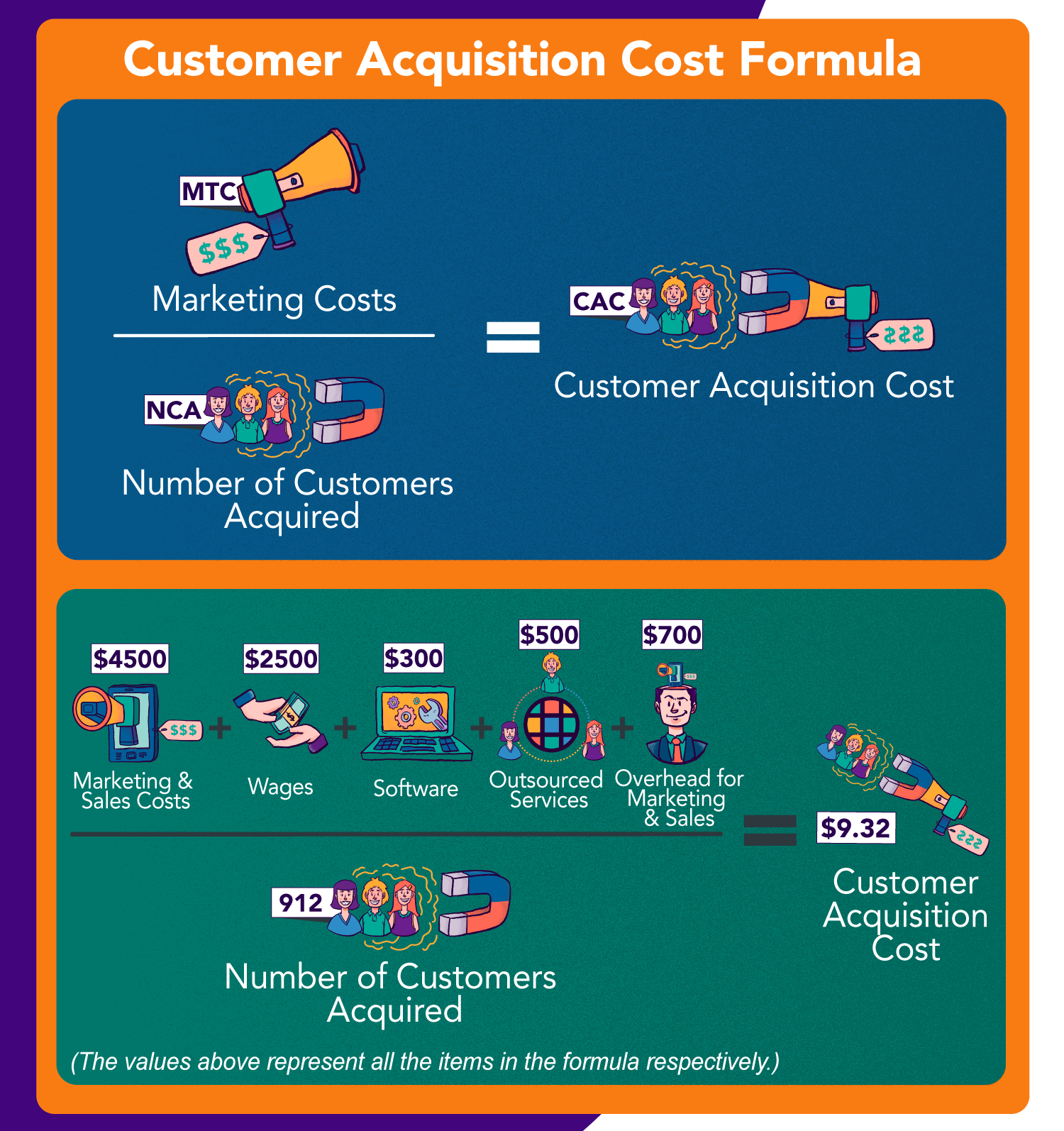
The Customer Acquisition Cost Formula
The CAC formula is really quite straightforward.
Let’s start with a super basic formula, like the following:
Marketing Costs / The Number of Customer Acquired =
Customer Acquisition Cost
For example, imagine you ran a Facebook ads campaign intending to acquire new customers. You spent $500 in one month, and you got 10 new customers. You can calculate your CAC for that particular campaign as follows:
$500/10 = $50
Of course, this is a simple formula for just one campaign. When you start to look at a longer period of time and a greater outflow of marketing expenses, you need a more sophisticated formula.
A second option for calculating CAC that takes into account more expenses like software cost and sales staff salaries would look like this:
Marketing & Sales Costs + Wages + Software + Outsourced Services + Overhead for Marketing & Sales / The Number of Customers Acquired = Customer Acquisition Cost
For this formula, again, all we have to do is plug in the appropriate numbers. Let’s figure out your CAC for December for the following data:
- Marketing & Sales costs: $4500
- Wages: $2500
- Software: $300
- Outsourced services: $500
- Overhead: $700
- Total: $8500
Let’s say your company acquired 912 new customers in the month. If we plug in the numbers, we get:
$8500/912 = $9.32
Your CAC will be $9.32.
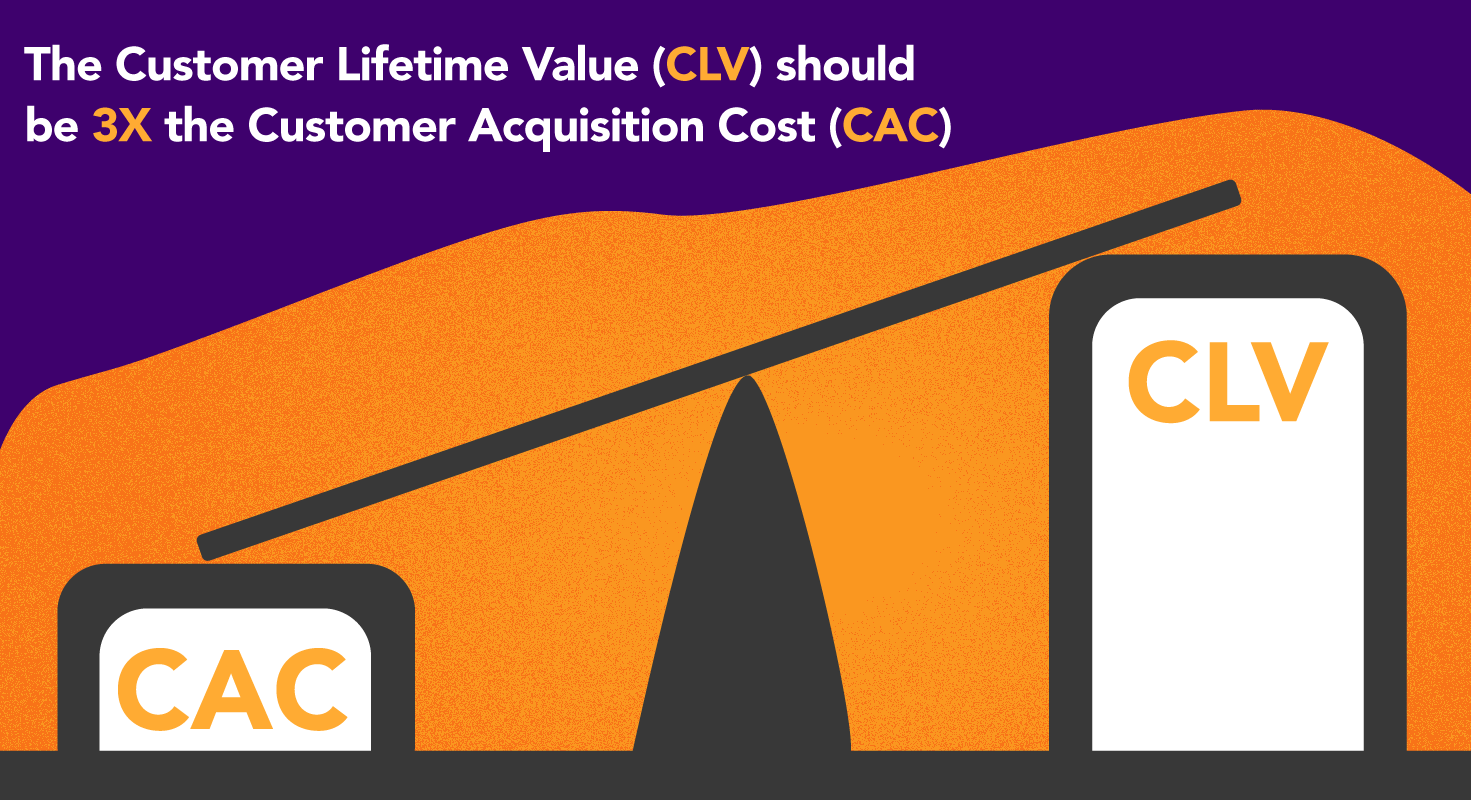
Customer Acquisition Cost and Customer Lifetime Value
How do you know what your CAC should be or if it’s too high? You can do so by comparing it to your customer lifetime value (CLV). CLV measures how valuable a customer is to your business during the entire duration of that relationship.
Broadly speaking, it should take around one year to recover the cost of customer acquisition, so your CLV:CAC should be 3:1, i.e., the value of your customers should be three times the cost of acquiring them.
If your ratio is less than 1:1, you’re paying more for customers than they’re worth, which could get you into financial trouble. On the contrary, if your ratio is higher than 3:1, then you’re most likely not spending enough on marketing, and you could be missing out on chances to find new leads.
What Do You Include in CAC?
What exactly goes into your customer acquisition cost calculation? Let’s take a look.
Marketing And Sales Costs
Marketing costs, both traditional and digital, are generally an integral part of every company’s expenses. If you’re unsure of what to include in your CAC calculation, here are a few ideas:
- Display Advertising: This refers to all your company spends on advertising, whether on apps, social media, or the Internet in the form of video, audio, text, or images. The goal is, of course, to encourage people to click through to a landing page or your website. Display ads may be a good investment: It has been proven to be one of the most effective methods for acquiring new customers, and it supports brand recall, brand awareness, and loyalty.
- Search Engine Marketing: This digital marketing strategy aims to increase the visibility of your website in the SERPs. As you only pay for impressions that ultimately result in visitors, at the end of the day, this is an efficient marketing strategy and a great way to grow your business in an increasingly competitive marketplace.
- Affiliate Marketing: If you’re working with affiliates, you can boost new customer acquisitions by providing the right commission structure to incentivize them to bring you new customers. It also includes expenditure on other strategies like exclusive coupons, vanity codes, and discounts for new customers.
- Social Media Marketing: You can use social media to acquire new customers by using user-generated content to build trust, team up with influencers, and provide stellar customer service (in fact, 72% of customers tell six people or more when they have a positive experience).
- Native Advertising: Also known as sponsored content, this refers to advertising that matches the function of the platform where it appears and usually looks like a video, article, editorial, or advertorial.
- Events: Don’t forget to include expenses from event marketing in your CAC. Hosting events is a great way to acquire new clients as they bring together potential customers in one place and allow you to communicate directly with them. Customers like events because they have a chance to experience your brand firsthand.
- Native Advertising: Also known as sponsored content, this refers to advertising that matches the function of the platform where it appears and usually looks like a video, article, editorial, or advertorial.
- Television: Though it might seem outdated, it remains a solid strategy to acquire new clients by using TV to market your products and services. You might have a leg up on digital advertising, as consumers tend to trust offline formats more than online ones (20% vs. 11%, respectively).
Employee Salaries
Good employees are worth the investment, so it’s better not to skimp on their wages. It’s essential to have good (and satisfied) employees on board because they will be the most effective ambassadors for your brand.
Engaged employees have a better relationship with your customers. Remember, these are the people responsible for customer service, so when they’re happy, your clients are happy.
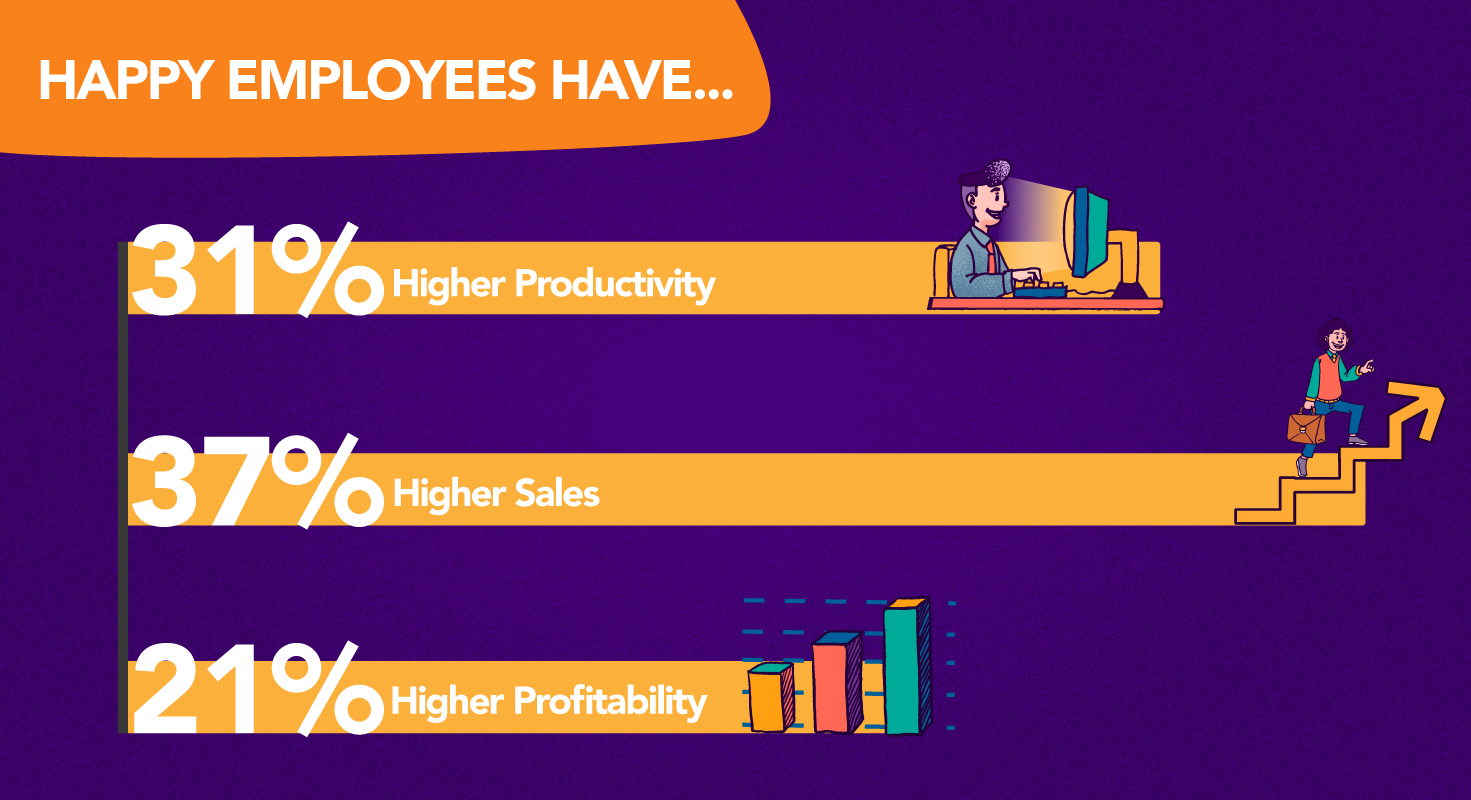
Don’t forget other personnel like contractors and freelancers because their satisfaction with their jobs will ultimately impact your customers, whether they’re writing your content, designing your graphics, or providing advice or equipment.
If you need to reduce salary costs, before you reduce wages or lay people off, look into chatbots and marketing automation to support your company and streamline customer service.
Technical Costs
All of the technology that your sales and marketing teams use would fall under technical costs. This includes reporting tools, software to track leads and sales, CRMs, productivity tools, programs to track emails and outreach, and social selling, among others. The cost for analysis, web conferencing, and collaborative tools would also fit into this category.
Production Costs
This refers to all of the costs that go along with creating content. For example, if your company is going to make a video, you need to purchase a camera to record it, you have to prepare the set, you’ll need to edit the video, etc. If you outsource your content, your costs could increase considerably; however, because creating top-quality content is imperative for any business, this is not an area where you want to skimp.
Inventory Upkeep
This refers to the money you’ll have to spend to maintain and upkeep your products. For example, if you sell software, the money you spend to improve the user experience, fix bugs, and complete updates would fall under this item.
What Not to Include In CAC
Some costs should not be included in your CAC, such as customer success costs, which essentially don’t revolve around new customers but expansionary revenue. Similarly, you don’t want to include credit card and payment processing fees or customer training costs.
CAC should also not include marketing expenses such as branding, logos, and PR (if it’s not focused directly on new prospects) or the costs associated with current customer contests (giveaways, holiday gifts, etc.).
Travel associated with visiting or serving current customers is not part of the CAC calculation, nor is user events and associated expenses.
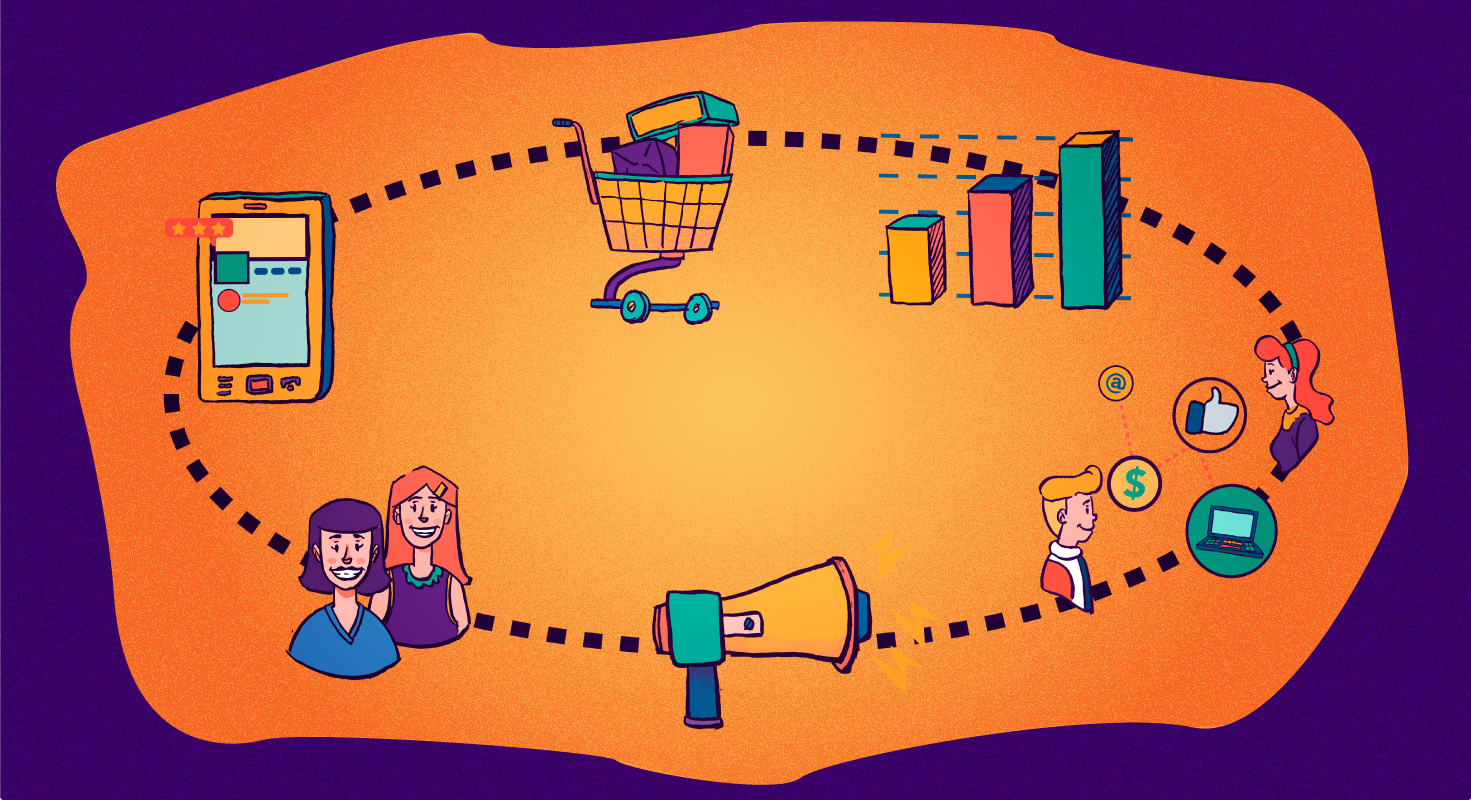
5 Ways to Reduce Customer Acquisition Costs
Typically, a lower CAC than your main competitors is good. After all, the less it costs you to acquire a paying customer, the better. This way, you can free up more money to spend in other ways to grow your business.
Let’s look at five ways to reduce customer acquisition costs that you can start working on today.
Boost Your Conversion Rate Optimization
When you increase your conversion rate optimization (CRO), you’re simply increasing the percentage of users who perform a desired action on your website. To do this, you really need to ensure that everything runs smoothly when potential customers reach your website.
Incredibly, for every $92 that companies spend on customer acquisition, they spend just $1 on conversion rate optimization. Even a slight boost in your CRO can not only reduce your CAC but also improve your bottom line.
There are many ways to increase your CRO:
- Optimize your highest-performing blog posts: This involves identifying your blog posts with high traffic but low conversion rates and tweaking them to boost conversions. You can either improve the SEO, add calls-to-action (CTAs), or use other strategies. It also makes sense to improve posts with high conversion rates further and make sure it’s well-positioned in the SERPs.
- Provide real value to potential customers: By connecting with them through outreach, surveys, and emails, you can understand your customers’ needs and pain points. Interview customers and review live chat transcripts. Listen on social media. Once you have enough data, analyze it and give people exactly what they’re asking for. This way, you’ll be able to retain current customers, who will then become advocates for your brand, which can help reduce your CAC.
- Add CTAs to blog posts: It’s always a good idea to encourage your customers to take action, but banner blindness is real, so you have to think outside the box. You’ll have to try out different strategies, but one effective option is to use text-based CTAs, specifically a standalone line of text with links to a landing page.
Additionally, personalizing your CTAs can make a world of difference. In fact, the data shows that personalized CTAs perform 202% better, and buttons outperform images. - Include user-generated content: Social proof is significant, and that’s why using the content created by your own customers can drive serious growth. In fact, user-generated content (UGC) can boost conversion rates by up to 200%, and consumers are 152% more likely to purchase after interacting with UGC.
Example: Project management company Basecamp saw a huge boost when it tweaked its landing page design for Highrise. The original page was full of text, so they decided to add human images to increase trust and credibility. They tried several strategies, but after including a photo of a woman’s smiling face, which clearly made it more inviting, their conversions improved by 102.5%.
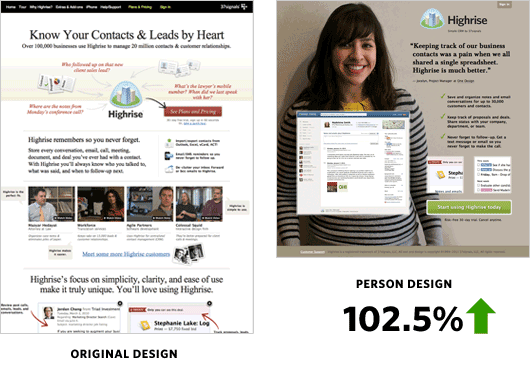
Implement a Retargeting Strategy
A great way to lower your CAC is through retargeting, where you basically remind visitors about your products and services after they leave your website without buying anything. Maybe they got distracted, or they weren’t ready to go through with their purchase.
Whatever the reason, retargeting is an effective way to bring them back into your sales funnel. Think of it as a gentle nudge in the right direction to encourage them to complete their purchase. It can help improve customer conversion rates by generating highly targeted campaigns for prospective customers.
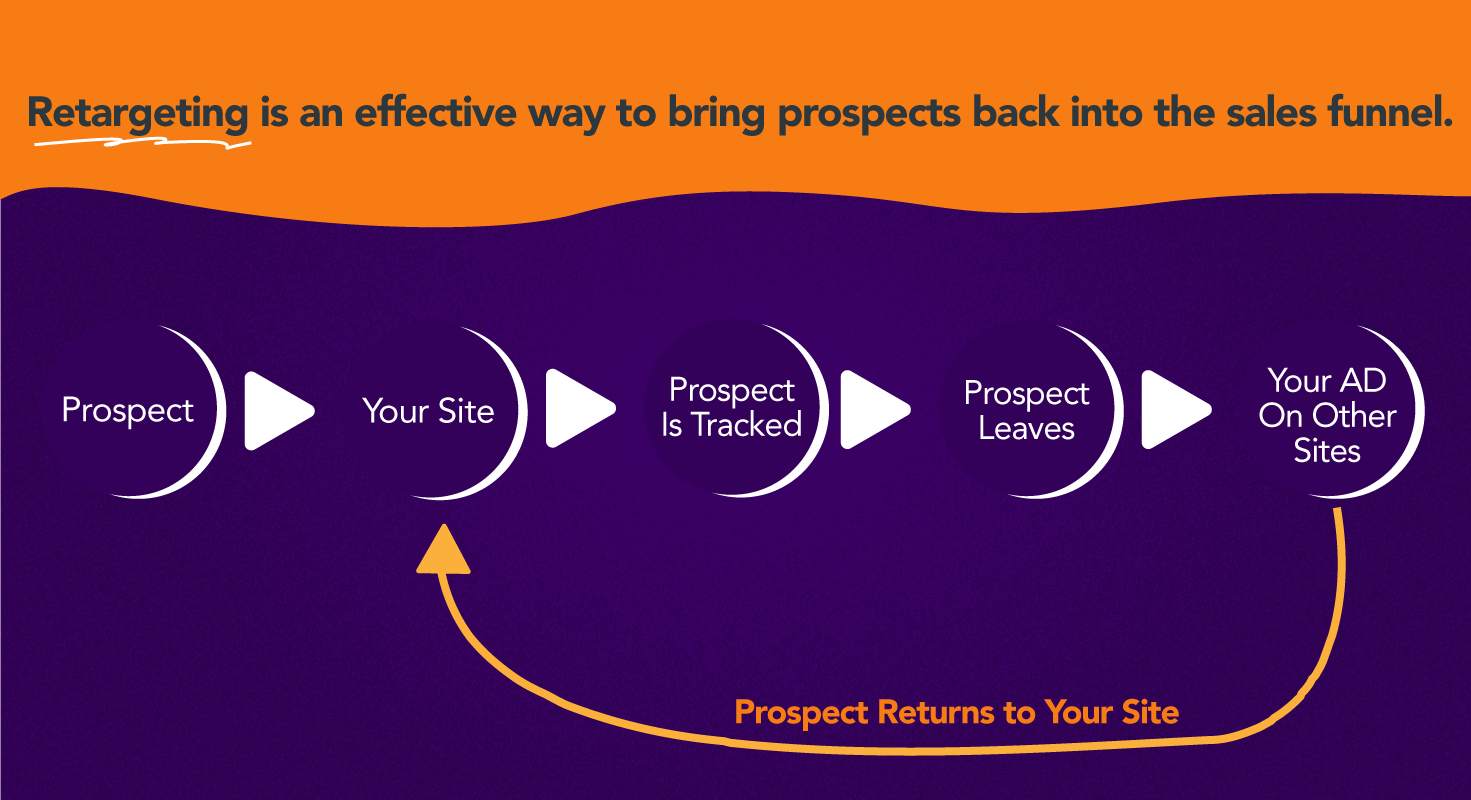
To do this, you can use the Google Ads display network or Facebook Ads or both, to make sure you’re able to reach your audience at all times and increase the chances that they will convert. Retargeting is generally so effective that data shows it beats all other ad placement strategies, with a 1,064% efficiency rate.
Retargeting allows you to create highly targeted campaigns for potential customers. To do this, you’ll have to gather a lot of data to understand them as much as possible: their motivations, their preferences, their behaviors, etc. This will make it easier to convince them to buy your product or service.
Other reasons to use retargeting include the following:
- Retargeting reduces cart abandonment by 6.5% and can increase online sales by 20%.
- Visitors retargeted with display ads are 70% more likely to convert on your website.
- Around 37% of customers click on retargeted ads.
- The click-through rate of a retargeted ad is 10x higher than that of a typical display ad.
- Retargeting can boost engagement rates by up to 400%.
If you’re wondering when to roll out a retargeting campaign, do it when you want to:
- Promote your bestsellers, as this is an effective way to highlight your top-selling products and services.
- Introduce a new collection. People who like your brand and your products will come back to see what’s new when they see a retargeting ad.
- Build brand awareness. People will want to get to know you before they buy from you, and these ads can help you get in front of potential customers who aren’t necessarily ready to buy from you initially.
Example: Mattress company Casper gets it right with their retargeting campaign. After browsing products on their website, users who don’t make a purchase will often see an ad later. Casper ads that are part of its retargeting campaigns offer discounts and feature awards received by the company.
In fact, Casper implemented a combination of retargeting and performance campaign which increased its retargeting conversion rate by 76% with a 40% decrease in CPA and 28% increase in ROAS.
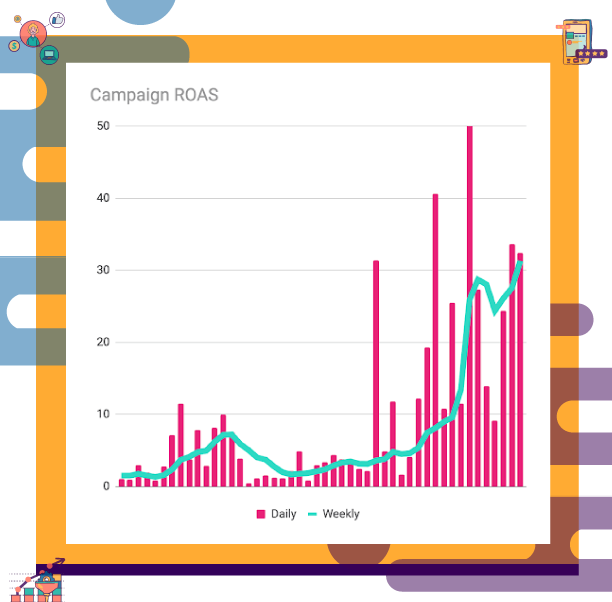
Create an Affiliate Program
Another way to lower your customer acquisition costs is to create an affiliate program. Your group of affiliates will be responsible for engaging with your potential customers to make sales on your behalf and earn a small commission in exchange.
This lowers your CAC because you will end up paying affiliates just a commission (usually percentage-based) only after customers buy from you. As a result, you’ll be able to increase sales through affiliates without upfront costs.
Affiliate marketing is trending now, with its spending expected to increase by 10% over the next few years. Not only that, solid affiliate marketing programs can increase revenue by 30%.
There’s no shortage of benefits for a business in this relationship:
-
- It’s easy to set up: Your affiliates will come up with the marketing content. All you have to do is select and vet them and maintain a good relationship.
- There’s little-to-no risk: There’s not too much at stake here since you owe your affiliates money after a customer makes a purchase.
- It’s flexible: You get to decide the specific terms of your payouts and how big or little your affiliate program is. Scale it as you grow, shrink it as needed.
- It will bring you targeted traffic: The affiliates that promote your products and services act as a filter through which only your ideal potential clients reach your website. Additionally, your affiliates will have influence over and access to an audience that is receptive to whatever it is that you’re selling.
- It’s low cost: Again, your affiliates are responsible for marketing, and you only pay them if they make a sale on your behalf. Affiliate programs don’t affect your cash flow like other advertising strategies can.
When you go about creating your affiliate program, there are plenty of things to take into consideration. Make sure you do your research first, so you get it right the first time.
Example: Amazon may be the standard-bearer when it comes to setting up a successful affiliate program. With one of the largest programs in eCommerce, and affiliates collecting hundreds of thousands of dollars in some cases, you can imagine that a nice chunk of Jeff Bezos’ fortune comes from his 900,000+ army of hardworking publishers.
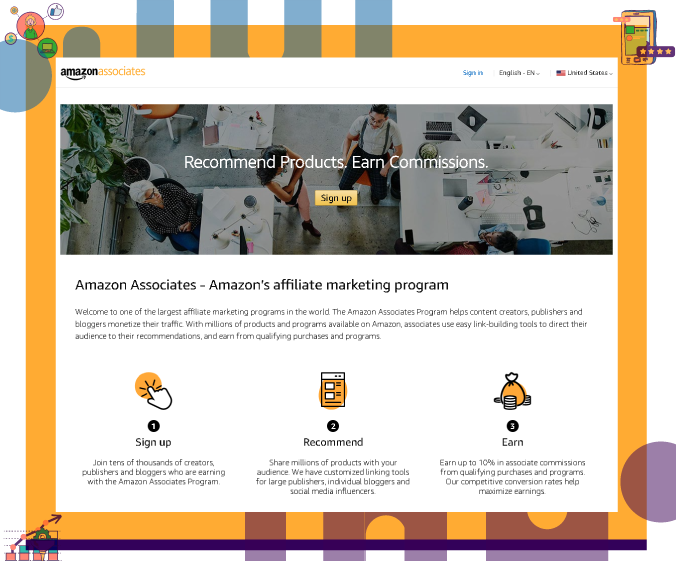
Use Marketing Automation
Automating part of your marketing efforts can effectively reduce customer acquisition costs as it allows companies to send automated messages to potential customers via text, email, web and social based on workflows.
When marketing and sales employees use automation to manage repetitive tasks, personnel cost decreases. Your team also gets more time to address critical issues and improve efficiency.
If you’re not on the marketing automation bandwagon, now’s the time. Automation not only decreases CAC but it also boosts lead generation, lead nurturing, sales revenue, and customer engagement. In fact, 75% of all companies already use automation tools. Even better, 76% of marketers see a positive ROI within one year and 44% within six months of adopting automation.
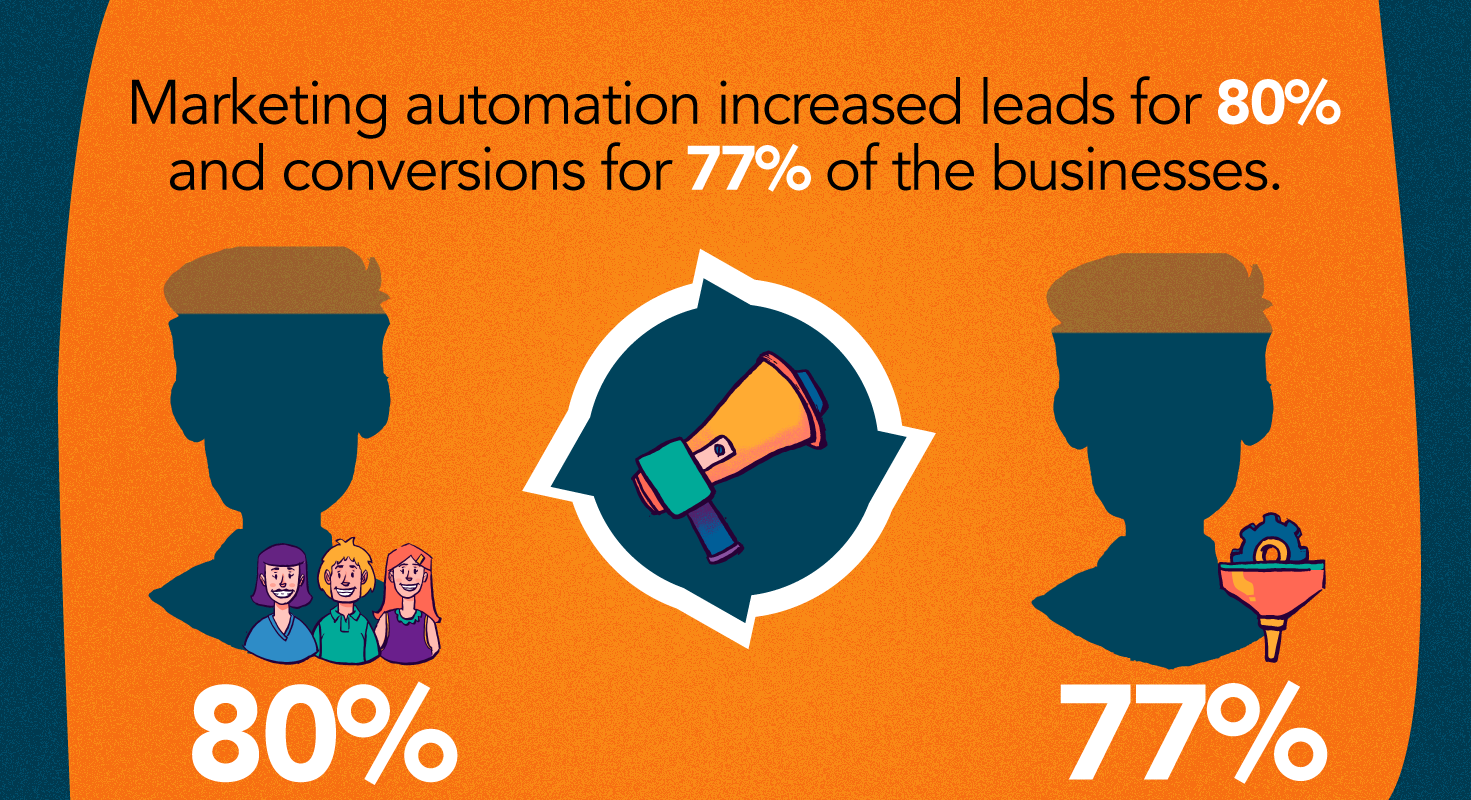
There are multiple ways to integrate marketing automation into your company. This includes:
- Chatbots: This is an extremely popular automation trend that’s expected to grow. Chatbots can be used for customer engagement and customer service. They are popular among consumers because they provide quick answers to queries, and, in 2019, they were able to handle 68.9% of chats from start to finish, with an average satisfaction rate of 87.58%.
- Automated Personalized Email: Send personalized emails to your entire mailing list, including new prospects and repeat buyers. Automation can run in the background, freeing up your time for other tasks. It also allows you to develop personalized campaigns triggered by each subscriber’s position in the sales funnel.
- Automated Social Media Marketing: This popular (and growing) trend lets you create and schedule your posts weeks in advance for a specific date and time. This can help you improve your social media presence and connect with more prospects. If you automate the process, you don’t have to scramble at the last minute, and you have more time to engage with your followers.
Example: Monthly grooming and beauty subscription box company Birchbox sets a good example here.
Once people have subscribed to its mailing list, Birchbox sends an initial welcome email, followed by a series of automated emails sharing make-up tips, beauty secrets and tricks, and a series of messages, the goal being to engage their prospects and build loyalty.
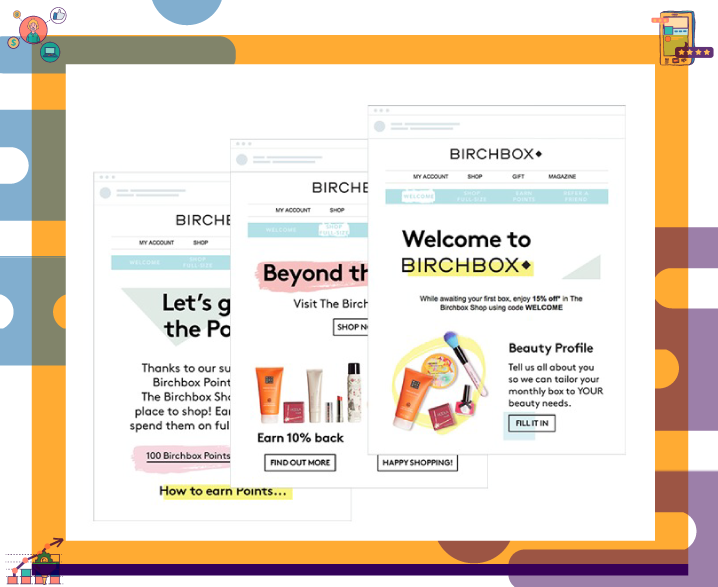
Create Engaging and Meaningful Content
Writing exceptional content is a great way to connect with your prospects and customers on a deeper level. It allows you to educate them about your brand, product and service, and it helps to build trust and authority. Strive to write content that helps your prospects and boosts engagement. After all, companies that blog generate 126% more leads than those that don’t.
Here are a few tips to make your content creation process more successful:
- Measure Your Performance: Of course, content doesn’t always perform how we’d like it to or as we expect. That’s why it’s essential to write it, publish it and track its performance. Can it be optimized? Do you need better or different calls to action? Is the tone right? What about the focus? You need to always be watching, measuring, and evaluating the performance of your content.
- Up Your SEO Game: While you’re creating that content, make sure you pay attention to search engine optimization (SEO). Paid traffic disappears once you stop paying for it, but using SEO yields much more sustainable results. In fact, SEO can reduce CAC by as much as 75% compared to paid traffic. Once you’ve paid the cost of implementing SEO, attracting organic traffic is completely free.
- Use the Right Keywords: Make sure you build content around long-tail keywords, which should be less competitive. Find gaps in your competitors’ content and write epic articles about those topics. Make sure you define your keywords based on your buyer personas, which can increase not only brand awareness but also organic traffic.
- Promote Your Content: Don’t fall for the line, “If you write it, they will come.” Get hustling and share the amazing content you’ve created with your prospects and current customers. Include it in your automated personalized email campaigns, post it on all of your social media platforms, and get it in front of the biggest influencers in your industry so they can share it with their followers.
Example: River Pools and Spa was a fledgling pool company on the brink of bankruptcy until the owner, Marcus Sheridan, started to take his content creation strategy more seriously. With time, he was able to turn things around and make it a hugely authoritative and reliable pool site.

After researching his audience, he discovered that the competition wasn’t doing a lot to solve people’s problems. There was one main question that people needed an answer: the price of a fiberglass pool. So he created an in-depth blog post to help his prospects:
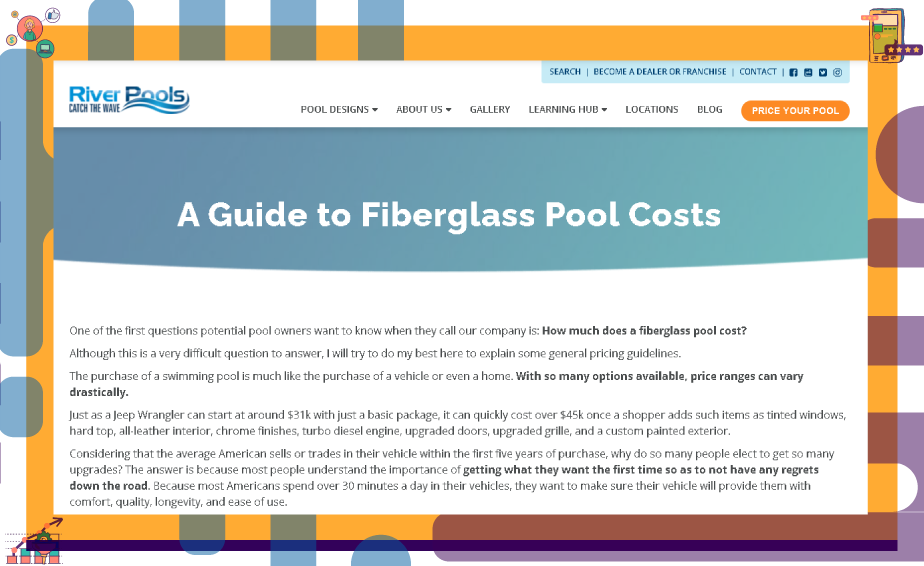
This blog post went on to earn him $2 million in sales. This is a solid long-tail keyword, especially since the product, fiberglass pools, is so expensive.
Understanding and knowing how to calculate your customer acquisition cost is hugely beneficial for any company that wants to maximize its resources and stretch its spending. Once you’ve calculated it, you’ll have a better handle on what your new customers cost your business, and you can put the strategies into place to improve this critical metric.


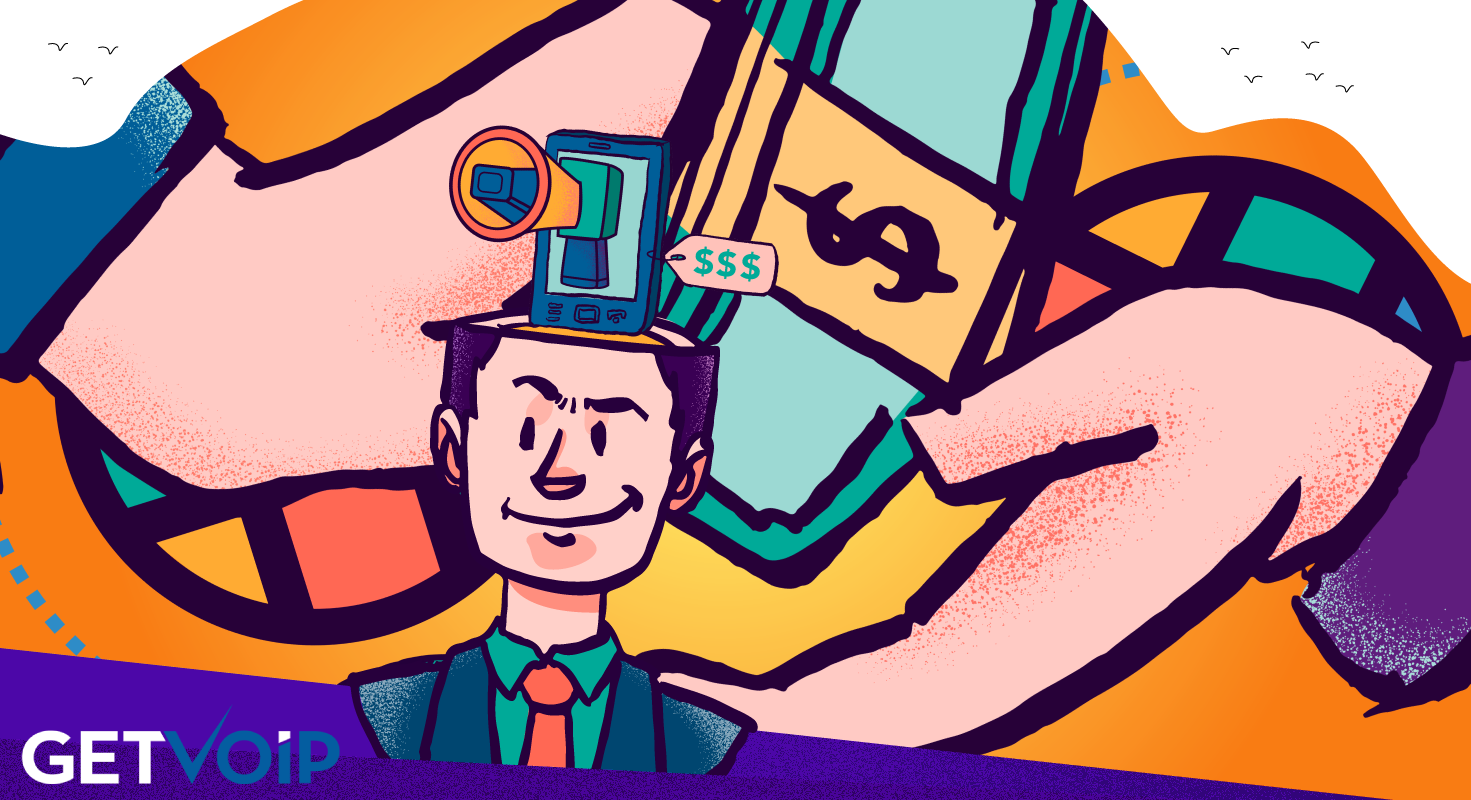




![What is Omnichannel Customer Service? [Benefits & Tips] What is Omnichannel Customer Service? [Benefits & Tips]](images/omni-channel-explained-350x203.png)

